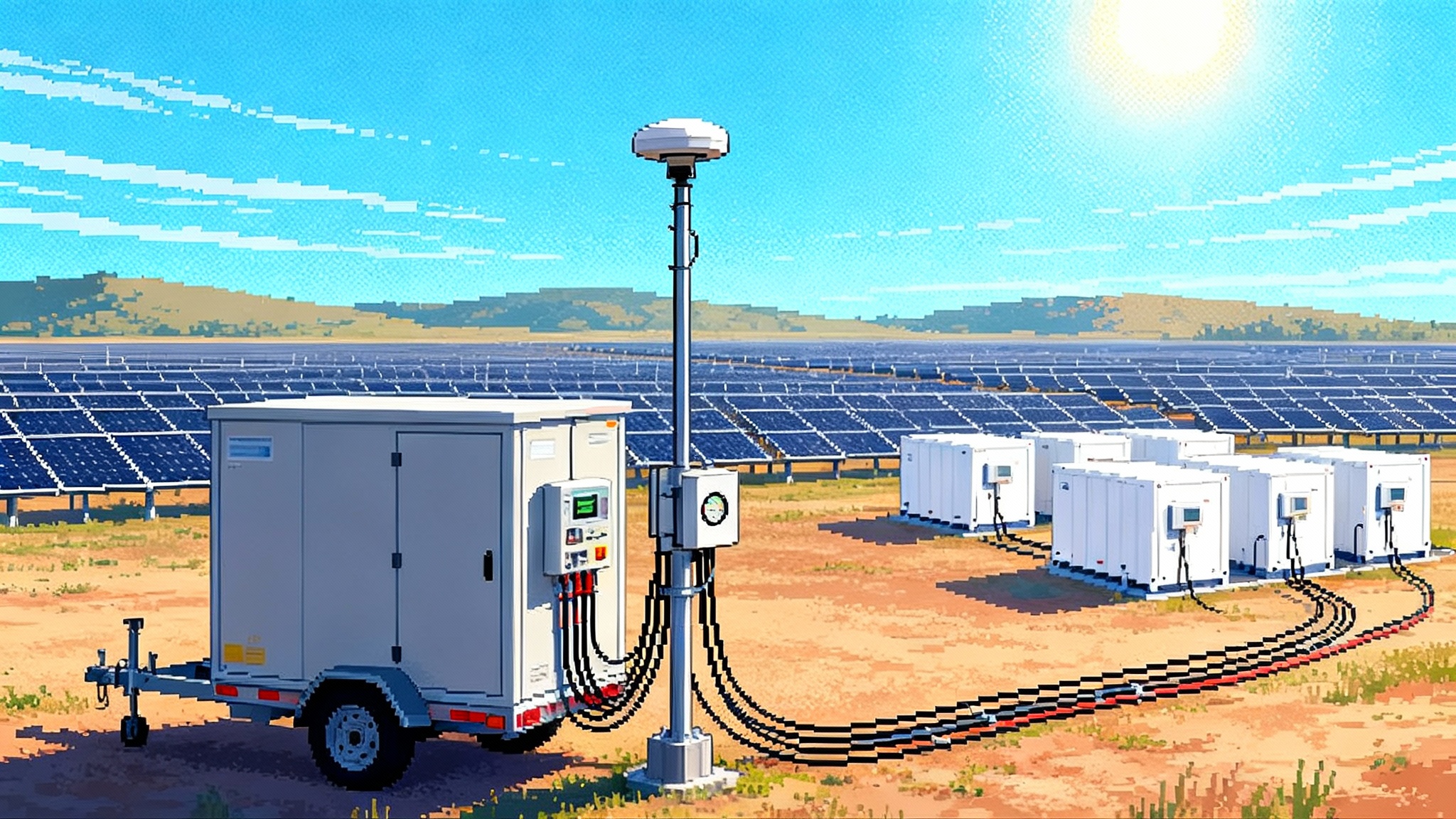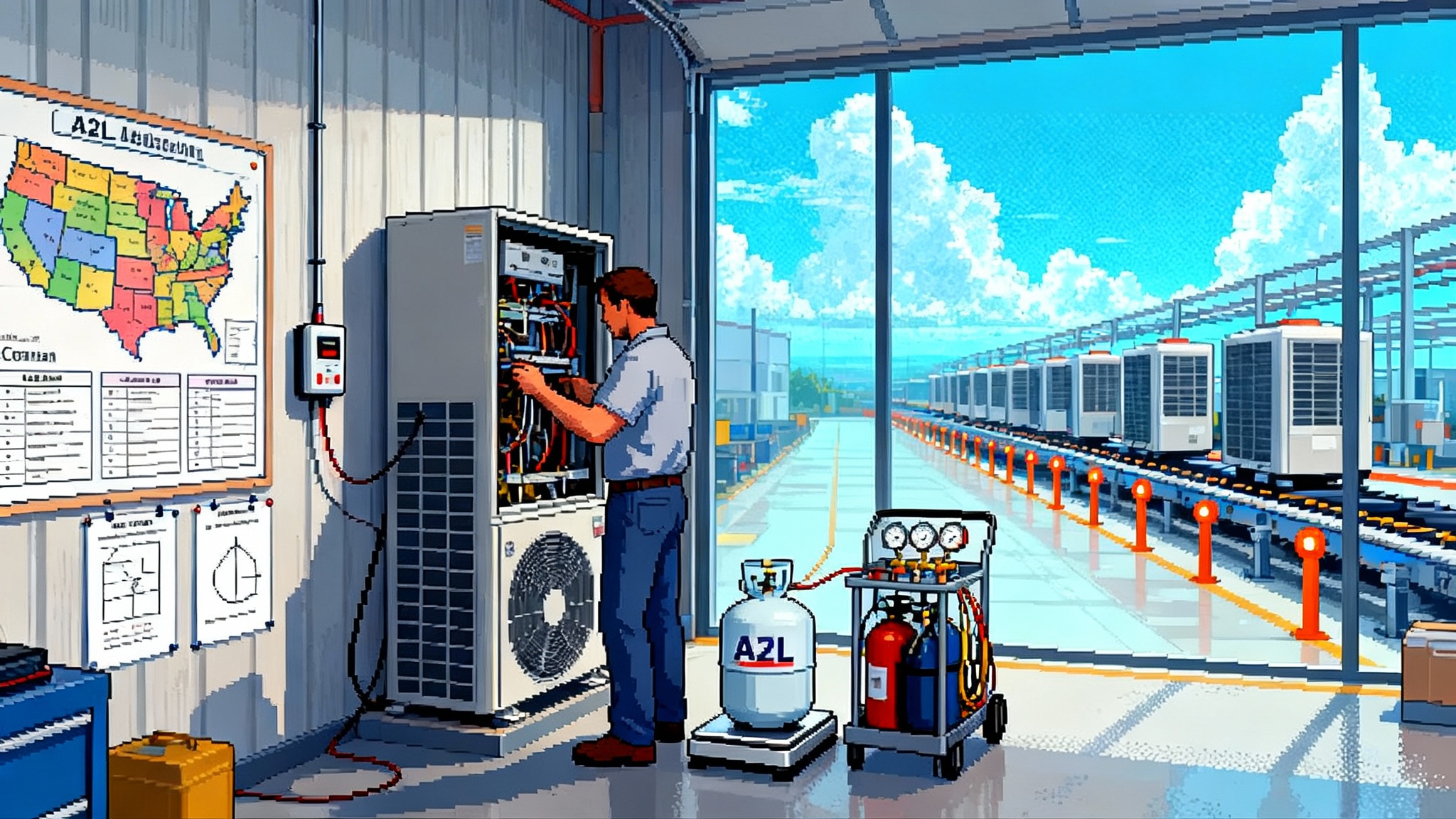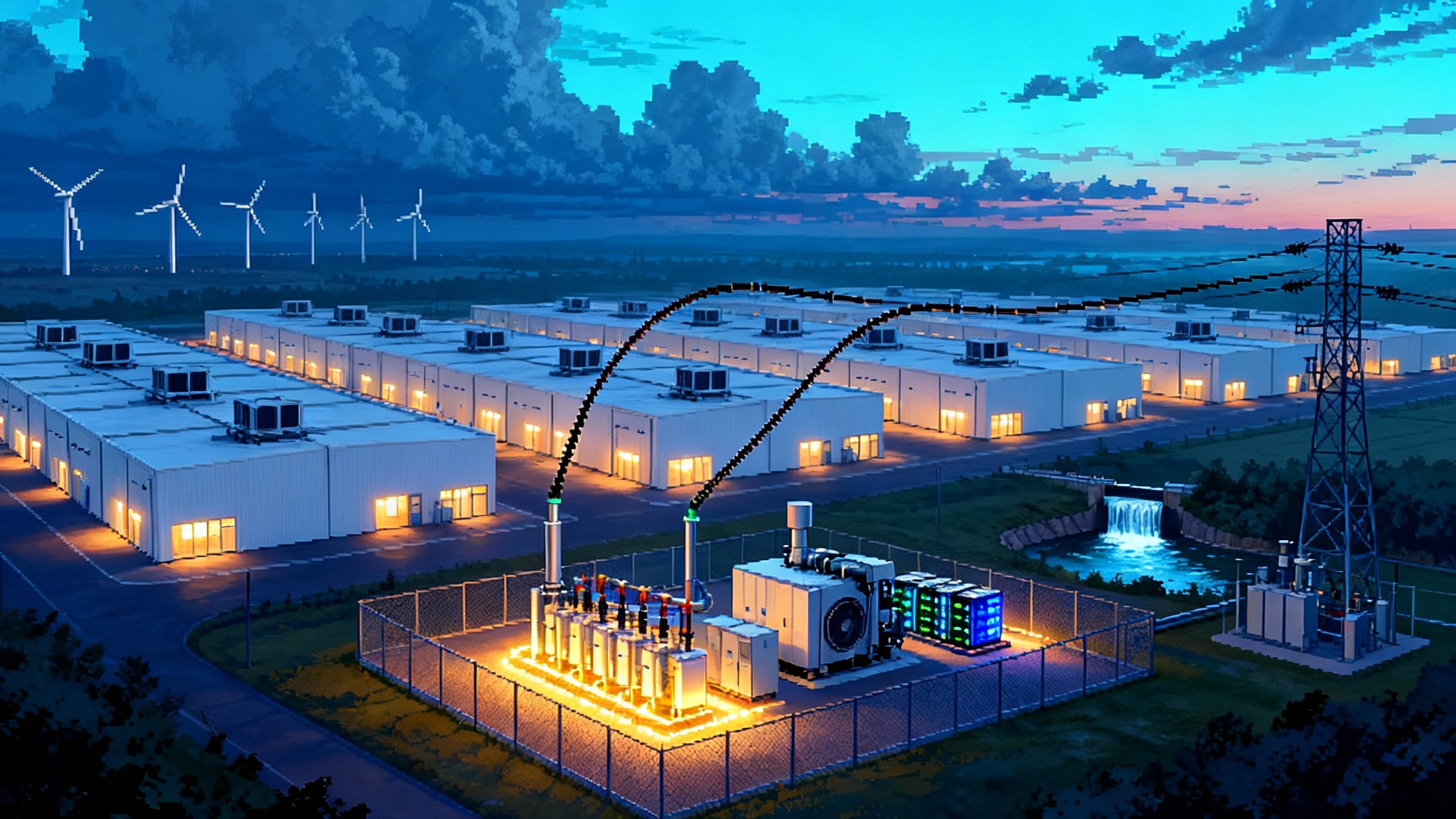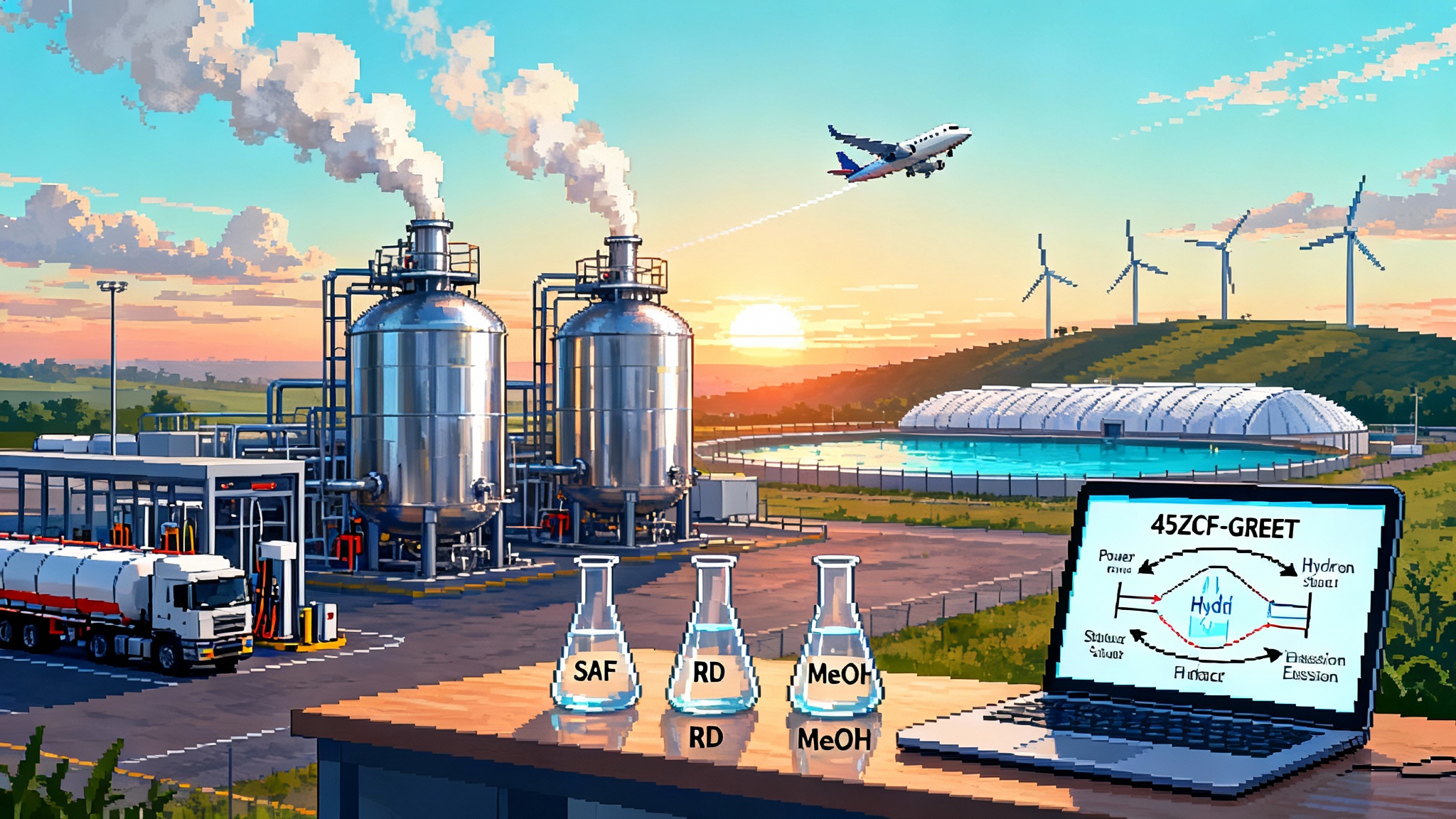FERC’s 1920-A puts states in charge of grid expansion
A plain-English guide to FERC Order 1920-A and what it means for 20-year regional transmission planning. See how stronger state roles, upfront cost allocation, and right-sizing can turn 2026 from planning into projects.

The news in one sentence
FERC’s rehearing order known as Order 1920-A largely affirms the 2024 transmission planning rule and, crucially, gives state regulators a stronger hand in how 20-year regional plans are built and how the bills are split, including a longer window for states to hammer out cost-sharing agreements and a requirement that utilities file those state agreements with FERC for a decision, even if the utility prefers a different plan. For the primary details, see the FERC summary of Order 1920-A.
This article translates the order into concrete steps. It also highlights how right-sizing existing lines and planning multi-state corridors can finally move, and where federal designations and financing are likely to accelerate first in 2026.
What exactly changed for states
Think of regional transmission planning like building a long highway that must cross many counties. Before, the highway engineers took the lead and the counties reacted. Now, the counties have seats at the table early, and they can extend the negotiation meetings if they need more time to agree on how to pay for the road.
Here are the state-level shifts that matter:
- States shape long-term planning scenarios. The rule directs transmission providers to plan over at least 20 years and to use transparent scenarios. 1920-A emphasizes that relevant state entities should help decide what those scenarios look like, so they reflect actual policy, demand growth, and reliability risks.
- States influence who pays and how. Transmission providers must propose default, or ex ante, cost allocation methods for projects selected through long-term planning. If the states in a region reach a cost-sharing agreement, the utility must file that agreement verbatim with FERC alongside any alternative. FERC will weigh the evidence and pick.
- More time, if states ask for it. States can request up to six additional months for the “state engagement period” to negotiate cost allocation. This detail sounds small, but it fixes a real-world problem: multi-state deals rarely land on a rigid clock.
- Documented consultation. Utilities must add a state consultation requirement to their Open Access Transmission Tariff and document the results publicly before they propose changes to cost allocation.
- First planning cycle timing. 1920-A allows more time to align the first long-term planning cycle with each region’s cadence. Transmission providers must propose a start date no later than two years after their initial compliance filings, which is meant to line up the new long-term cycle with existing processes rather than forcing a rushed first run.
The upshot: states are no longer just commenters. They are decision shapers, and the record must reflect it.
The core of the rule, in plain English
- Plan for 20 years, not five. Regions must look out across two decades. That means new load sources like data centers and electrified industry, and long-lived assets like wind, solar, nuclear uprates, storage, and gas plants that will still be on the system in the 2040s. Expect heavier impacts where AI becomes the new baseload.
- Test benefits you can count. Planners must measure a set of long-term benefits, such as avoided future rebuilds, fewer outages and emergency costs, production cost savings, lower losses, less congestion during outages, better performance in extreme weather, and reduced capacity needs due to more efficient power flows. These benefits also complement reliability gains from FERC’s 2025 IBR rules.
- Select projects with clear rules. Regions need a transparent evaluation process to decide which lines make the cut in the long-term plan.
- Allocate costs up front. The order requires at least one default cost allocation method, and it invites state agreements that FERC will consider. Knowing “who pays what” early makes it possible for projects to attract capital.
- Right-size rebuilds. When a line needs replacement anyway, planners should evaluate whether to rebuild it to a higher capacity, for example reconductoring with advanced conductors, upgrading towers to carry two circuits instead of one, or installing higher-capacity equipment. Right-sizing often delivers the cheapest new capacity because the corridor already exists and the crews are already mobilized. Many of these upgrades align with Order 881’s operational moment.
What utilities, RTOs, and ISOs must do next
Use the next six to twelve months to create a paper trail that FERC will accept, your states can support, and investors can underwrite. Here is a prioritized checklist.
- Launch a state engagement charter
- Identify the relevant state entities. In most regions that is the state public utility commissions, often organized through bodies like OPSI in PJM, OMS in MISO, and NESCOE in ISO-New England.
- Agree on decision rules. States should “decide how to decide” as a group, for example majority or supermajority voting for scenario inputs and cost allocation proposals. Publish the rules.
- Calendar the engagement. Set recurring meetings through the compliance timeline. Use the six-month extension option if consensus is close but not final.
- Put your Open Access Transmission Tariff changes on rails
- Add the required state consultation language.
- Spell out how state proposals will be recorded, posted, and filed alongside any utility alternative.
- Define a clear evaluation framework for selecting long-term projects. Tie the framework to the benefits the rule requires you to measure.
- Build 20-year scenarios that match reality
- Load. Reflect data center clusters, AI and cloud buildouts, manufacturing loads, and electrified heating and transport with location specificity.
- Supply. Include signed interconnection agreements, resource retirements, and likely onshore and offshore wind, storage, and solar buildout based on state policy and developer pipelines.
- Weather and risk. Run stress cases, for example prolonged heat domes or winter storm conditions that overlap with generator outages.
- Interregional flows. Test what happens when your neighbors have problems or need help. The cheapest fix might be a tie across a seam.
- Select and cost out right-sizing candidates
- Create a five to ten year “rebuild list” of aging lines by voltage class and condition.
- For each candidate, evaluate reconductoring with advanced conductors, adding a second circuit on existing towers, or uprating with grid-enhancing technologies like dynamic line ratings and power flow controllers.
- Compare the right-sized options to greenfield routes. Many will pencil out better because the corridor and substation footprints already exist.
- Draft ex ante cost allocation that matches benefits
- Keep it simple and defensible. For example, split costs by a blend of quantified production cost savings, reliability metrics, and load share that benefits most from the project.
- Offer a state agreement pathway. Make it easy for states to file a joint proposal that you can submit to FERC alongside your default.
- In multi-state corridors, give credit for siting difficulty or early right-of-way contributions to reduce friction.
- Stage permitting and siting work to match the plan
- Pre-screen corridors against environmental constraints and community concerns before they are selected in the plan.
- Line up memorandums of understanding with railroads, highway departments, and pipeline rights-of-way to enable co-location where feasible.
- Begin early, meaningful engagement with affected Tribes, local governments, and landowners, and budget for community benefits where appropriate.
How right-sizing rebuilds can move first
Right-sizing is the fastest path to real megawatts of transfer capacity because it piggybacks on work you already must do. Picture a two-lane road that needs resurfacing this year. If the shoulders are wide and the right-of-way exists, adding a third lane is far cheaper than surveying a brand new highway across farms and wetlands.
Examples utilities can move on quickly:
- Reconductor 115 and 138 kilovolt lines with advanced conductors to cut losses and boost ratings without new right-of-way.
- Double-circuit select 230 and 345 kilovolt corridors that already have adequate tower spacing. Where spans are tight, replace towers with higher capacity steel and reuse the corridor.
- Add power flow control devices at substations to push power onto underused paths today, and pair those with reconductoring during rebuilds to lock in long-term gains.
Because these projects sit inside existing corridors, they face fewer siting fights and can be permitted faster. They also deliver measured benefits that support cost allocation. Expect regulators to ask for right-sizing analyses as a condition for approving greenfield routes.
Multi-state corridors, finally with a playbook
The order gives multi-state lines a clearer process. Two design features matter most.
- Upfront cost allocation. Picking the bill split in advance removes the single biggest source of delay. States can file an agreement and ask FERC to approve it. That certainty unlocks financing.
- Scenario-driven selection. When a corridor naturally solves identified future needs, such as winter reliability and summer congestion relief across a seam, it is easier to justify on consumer grounds rather than on abstract policy grounds.
Cross-seam examples to test in scenarios include MISO-PJM ties that cut winter risk and reduce curtailments, SPP connections into the Western Interconnection that move wind west-to-east during heat waves, and upgrades to New England ties that support offshore wind variability. The names and routes will differ by region, but the pattern is the same: find the least-regret corridors that solve multiple problems at once.
Where federal designations and financing will accelerate first in 2026
The Department of Energy has focused its National Interest Electric Transmission Corridor designation process on three high-priority areas, and it has published a schedule that points to 2026 as the year draft designation reports and draft environmental documents land. See the DOE’s NIETC designation process.
The three areas to watch:
- Lake Erie-Canada
- Why it is promising. The corridor targets a congested, weather-exposed part of the grid where cross-lake connections and onshore reinforcements can reduce outages and ease winter and summer peaks.
- Who is involved. Expect planning coordination among PJM states and Ontario counterparts, plus merchant developers with high voltage direct current experience. Existing lakebed and shoreline rights-of-way shorten timelines compared with entirely new inland routes.
- What could move in 2026. Draft designation plus parallel regional planning selections would allow capacity contracts or other federal tools to backstop financing and accelerate permitting.
- Southwestern Grid Connector
- Why it is promising. The corridor spans parts of Colorado and New Mexico, with strong wind and solar resources seeking paths to load. It is also where east-west seams can transfer power during extreme weather.
- Who is involved. Western utilities, public power, and cooperatives, including those tied into the Southwest Power Pool’s expanding footprint, will be central. Federal land managers will also matter because much of the terrain touches public lands.
- What could move in 2026. Draft designation plus early rights-of-way agreements, with capacity contracts that de-risk merchant exposure and help projects break ground in 2026 or 2027.
- Tribal Energy Access
- Why it is promising. Many Tribal Nations face chronic under-investment in transmission. Targeted corridors that connect Tribal load and resource areas to regional backbones can unlock reliability benefits and economic development.
- Who is involved. Tribal utilities and authorities, the Western Area Power Administration, and neighboring investor-owned and cooperative utilities. Government-to-government consultation will be central, and the process must be led with respect and consent.
- What could move in 2026. Draft designation alongside federal technical assistance and early community benefits agreements. Expect right-sizing of existing federal corridors to be attractive where feasible.
On the financing side, the Department of Energy’s Transmission Facilitation Program has been using capacity contracts to act as an anchor customer for lines that struggle to secure early shippers. Selected projects from earlier rounds have indicated construction starts as early as 2026, with a backstop that pushes all selections to begin construction by the end of 2027. That timeline pairs well with NIETC draft designations because NIETC status can unlock extra federal tools, clarify the public interest, and, in certain circumstances, establish a backstop siting path through FERC if a state with siting authority does not act within a year or lacks authority at all.
What this means for your region
- PJM and neighbors. Data center growth, winter reliability concerns, and aging 230 and 500 kilovolt assets point to a portfolio that mixes cross-border ties with systematic right-sizing. States should use their council to test simple, durable cost splits tied to measured savings and reliability benefits.
- MISO and SPP. Multi-value project portfolios that cut curtailments and move wind and solar to load, combined with seam ties that reduce the need for emergency purchases during heat waves and cold snaps, are natural fits for the 20-year lens. Cooperative and public power owners have a clear voice through state bodies.
- The West. Expansion of organized markets and transmission planning services in the Western Interconnection will make cross-state portfolios easier to evaluate. Paced right-sizing on existing 230 and 345 kilovolt corridors can deliver early gains while longer 500 kilovolt builds mature.
- New England and New York. Offshore wind variability and winter peaking risks make interregional coordination and lake or submarine cables part of the least-regret set. Expect a premium on upgrades that also cut losses.
Practical actions for 2026
For utilities and transmission owners
- Publish a right-sizing inventory by substation pair with preliminary ratings and outage windows. Invite market participants to identify where additional capacity unlocks stalled generation or storage.
- Pre-negotiate capacity contract terms so you can move quickly if a federal anchor-customer opportunity emerges. Standardized terms accelerate board approvals and credit reviews.
- Tie community benefits to project benefits. For example, if a corridor lowers outage risk in a county, earmark a resilience investment in that county so residents see the link between the project and local gain.
For state commissions and energy offices
- Adopt a common template for cost allocation proposals. Make it easy to update as scenarios evolve. Clarity attracts capital.
- Use the extension authority if it avoids a fragile agreement. Speed matters, but durable consensus matters more.
- Ask RTOs and utilities for side-by-side cases that compare right-sizing to greenfield routes. Approve the options with the most measured benefits per dollar.
For developers and independent planners
- Align project narratives with the rule’s benefits. Show production cost savings, reduced emergency events, and peak capacity benefits with transparent methods.
- Pursue co-location along highways, rail, and pipelines to lower siting risk. Combine this with advanced conductors and substation upgrades to minimize new footprints.
- Prepare to serve as a counterparty on capacity contracts that a federal anchor helps catalyze. Early shipper commitments are often the missing piece for financing.
A quick note on timing and compliance
Order 1920 became effective in 2024 and triggered a cascade of filings in 2025. With 1920-A’s allowance for a start up to two years after initial compliance, many regions will kick off their first fully aligned 20-year cycles by 2027. That may sound far away, but the critical choices happen in 2025 and 2026: scenario design, cost allocation templates, and right-sizing inventories. The states now have the tools to shape those choices, and FERC expects a record that shows it.
The bottom line
The reset is not a slogan. It is a shift in who sets the terms of long-term transmission planning. With Order 1920-A, states have the leverage to insist on clear scenarios, measured benefits, and upfront cost splits. Utilities and RTOs have a practical path to move near-term capacity through right-sizing while longer multi-state corridors wind their way through design and consultation. And the Department of Energy’s 2026 timetable for draft NIETC designations creates a natural on-ramp for federal tools that can shorten financing and permitting timelines.
Use the next year to turn this from a rule into a build plan. Decide how you will decide, quantify the benefits that matter in your region, and lock in cost allocation that investors and consumers can live with. Do those things well, and 2026 will not be another planning year. It will be the year steel goes in the ground where it delivers the most value for the grid and the people who rely on it.








